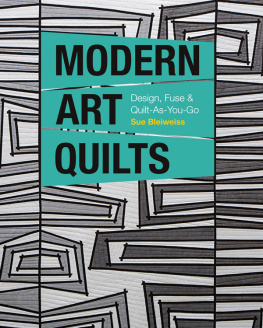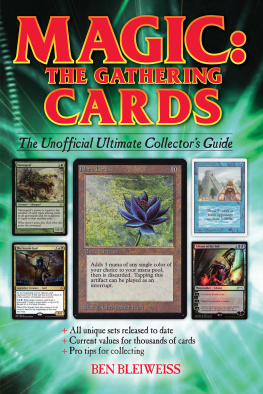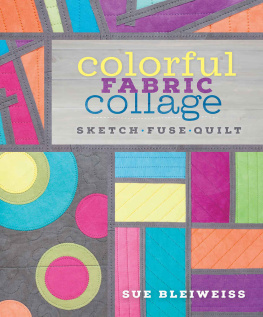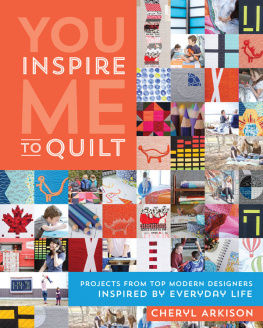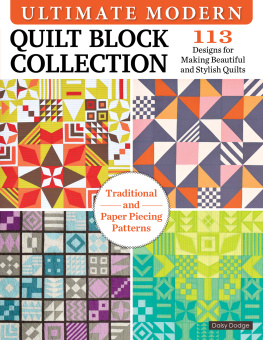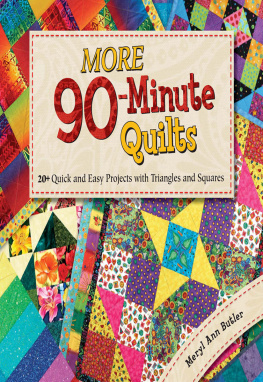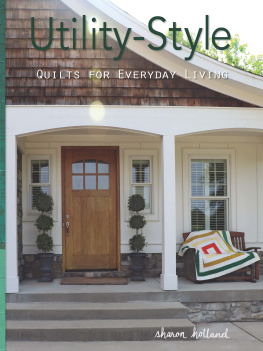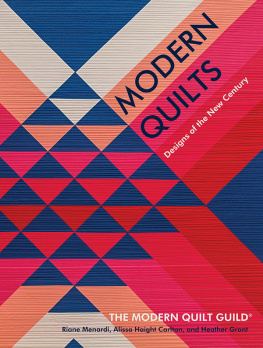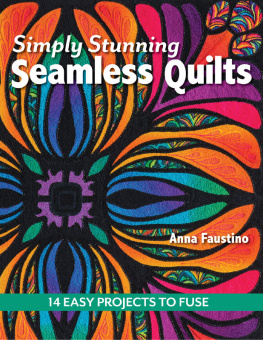Publisher: Amy Marson
Creative Director: Gailen Runge
Acquisitions Editor: Roxane Cerda
Managing Editor: Liz Aneloski
Editor: Lynn Koolish
Technical Editor: Julie Waldman
Cover/Book Designer: April Mostek
Production Coordinator: Zinnia Heinzmann
Production Editor: Alice Mace Nakanishi
Illustrator: Valyrie Gillum
Style photography by Lucy Glover and instructional photography by Mai Yong Vang of C&T Publishing, Inc., unless otherwise noted
Published by Stash Books, an imprint of C&T Publishing, Inc., P.O. Box 1456, Lafayette, CA 94549

Dedication
for Olivia & Ben
be kind
be thoughtful
be true to yourself
dream big & reach for the stars
Acknowledgments
A huge thank-you to Lynn Koolish for her superior editing skills as well as her guidance and support throughout the process of writing this book. For Iris, because Mistyfuse makes it possible for me to create quilts the way I want to make them. To my friends who cheered me on when the writing process got overwhelming and I didnt think Id ever meet the deadlinesthank you for your unwavering support and friendship, you know who you are and I love you all.
And, of course, to Scott, for always encouraging me to reach for the stars and follow my dreams.

INTRODUCTION
When I made my first quilt many, many years ago I used the traditional construction method of piecing, using seams and making sure all my corners and angles matched up. It was a torturous experience and I vowed I would never to do it again. I have great respect and admiration for quilters who have the perseverance to cut large pieces of fabric into small ones and then put them together using seams, but its a construction technique that I just have no patience for. That first quilting experience put me off quilting for a lot of years! So whats a quilter to do when she finds herself wanting to make modern quilts but not willing to sew a seam? She finds another way.
And so I choose to fuse!
With no seams to sew, no shape is off limits. Circles, triangles, hexagons, curved edges, lineswhatever shape or image that I want to incorporate into my design is usable because I dont have to worry about how I will connect one shape to the other. Bias-cut edges and accuracy are not problems because when I fuse a shape in place, it stays where I put it. There are no worries about corners or intersections not lining up or which direction to press seams. Fusing gives me an incredible amount of flexibility in my quilt designs, and that means any design that I can dream up, I can turn into a quilt.
But a successful quilt design needs more than just the flexibility of fusing to achieve a visually pleasing result and thats why Ive dedicated a section of this book to a discussion about the elements of art and the principles of design. Modern quilts are typically identified by their use of high contrast, graphic designs, expansive negative space, and minimalist design. While those parameters sound easy enough to work in, a basic foundation in the principles of design will allow you to design quilts that are more likely to intrigue the viewer and elicit a Wow! response.
To get you started on your journey, this book features seven fused quilt projects, ranging from small to large. If youre new to fusing, I suggest you start with Party Lights . Its a ,small quilt, measuring just 13 13, with a fun design created using just squares and a few wavy lines. Its a perfect way to introduce yourself to working with fusible web without getting overwhelmed by a large project with a more complicated design.
Usually, I like to work with my own hand-dyed fabrics, but for all the projects in this book, I used solids from Cherrywood Fabrics instead. If you want to try your hand at dyeing, take a look at the method that I use (see Easy Fabric Dyeing). I prefer working with solids over prints, but I encourage you to make your quilts using the fabrics and colors that you like to work with. You can change the color palettes, use a combination of prints and solids, change the size of the quilts, or incorporate your own personal touches by adding imagery or shapes that you like. You can create the projects as they are or use them as a jumping off point for your own designsthe choice is yours and the possibilities are endless!
I wish you all the best in all your creative endeavors!
Sue
ART AND DESIGN
When it comes to the elements of art and design, youll find a lot of points of view. An internet search on the subject results in more than two-million results! A search on Amazon for books on the subject returns pages and pages of titles, and each of those websites and books seems to have a different opinion and definition for what the elements of art and the principles of design are. So how do you make sense of all of it, what are the differences between elements and principles, and does it really matter?
In my opinion, it does matter, if for no other reason than this: When you have a basic understanding of the concepts to refer to, it makes it easier for you to critique your own work and evaluate what happened if your finished piece isnt quite as visually appealing as you want it to be. This is especially true when it comes to designing modern quilts because they tend to incorporate geometric or graphic elements combined with empty space. You need to know how to take a quilt that uses a single image and a limited color palette from flat and boring to a visually stunning masterpiece, and understanding the elements and principles of design helps you do just that. The following gives you an introductory outline.

Elements of Design
These are the building blocks of every piece of artwork. You cant make a piece of art without using one or more of these. Think of these as the ingredients in a recipe.
LINE
Line is where it all begins. Lines can be thick, thin, straight, wavy, horizontal, vertical, diagonal, curved, solid, or broken.
SHAPE
Shape starts as a line and once the line meets or intersects with another it becomes a shape. Shapes can be geometric or free-form. Shapes can also be formed using the negative space between objects or lines.
COLOR AND VALUE
As quilters we all know what color is, but color and value are probably the elements of art that are most likely to intimidatewith value, contrast, mood, complementary, triad, primary, neutrals, warm, cool, color wheelsyikes! Indeed, theres a lot know when it comes to the subject of color and value. My approach isDont overthink it! I use and combine colors, values, and hues as they speak to me and give me the visual result that I want.
You could spend weeks and months studying texts on color, but that wont leave much time for creatingwork with colors and combinations that you like and dont worry about where they fall on the color wheel.
TEXTURE
Texture refers to a surface quality that can either be seen, felt, or both. Texture can be real or impliedfor example, if you create an image of a cactus on your quilt by using paint, dye, fabric markers, or some other means, it can appear to be rough and sharp; but when you touch it, the surface is smooth so the texture is implied. Alternatively, if you use hand embroidery, beading, or trapunto on a quilt to create texture, they can be both seen
Next page
